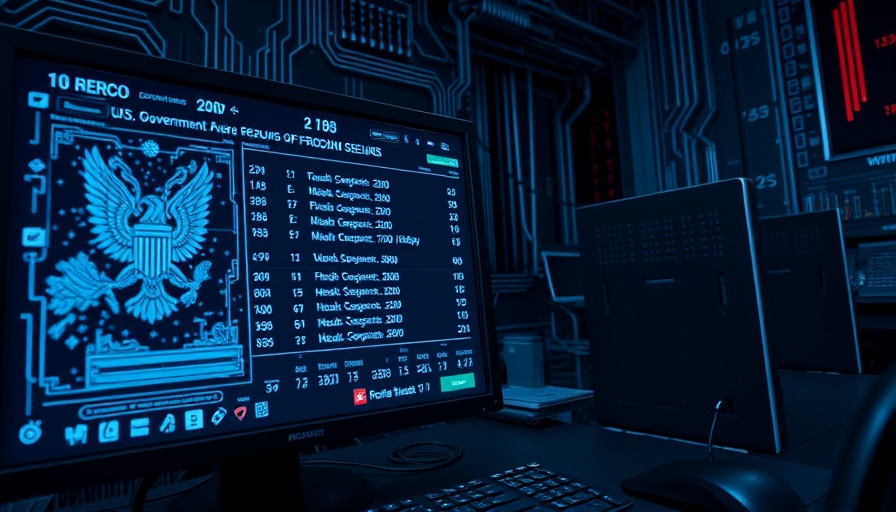
A Major Blow to Cybercrime: U.S. Government Strikes Back
In a groundbreaking operation, the U.S. Department of Justice has dismantled a significant Russian ransomware gang, known for wreaking havoc on critical infrastructure and significant financial losses across America and beyond. On July 24, a coalition of international law enforcement agencies, including members from Canada, Germany, Ireland, and the U.K., seized four servers and nine domains associated with the notorious BlackSuit and Royal malware.
More than just servers, the coalition also confiscated around $1 million in bitcoin, a currency often favored by cybercriminals for its perceived anonymity. According to reports, this amount was linked to a frozen digital currency exchange account, showcasing a methodical approach to disrupting cybercriminal funding and operations. The operation highlights a growing trend in international collaboration, emphasizing that cybercrime doesn't stop at borders.
The Threat of Ransomware: Who Are BlackSuit and Royal?
BlackSuit and Royal are two of the most menacing strains of ransomware currently plaguing organizations globally. Developed by the same Russian outfit, these ransomware variants have collectively targeted a staggering array of sectors, including healthcare, education, and government—vital services that should not be compromised. Since 2022, these hackers have been linked to over 450 victims in the U.S. alone, with demanded ransoms exceeding $500 million in total. The highest reported demand was an alarming $60 million, a testament to the escalating threat landscape of ransomware attacks.
As Assistant Attorney General for National Security John A. Eisenberg noted, the actions of the BlackSuit ransomware gang represent a serious threat to public safety through their persistent targeting of critical infrastructures.
Law Enforcement Steps Up: A Unified Front Against Cybercrime
The recent seizure of assets and domains marks a significant milestone in the fight against ransomware. Indeed, this operation wasn't just a win for U.S. authorities—it underscores a unified global stance against cybercrime. Collaborative efforts like these enhance the effectiveness of law enforcement agencies, which previously dealt with cyber incursions largely in isolation.
The importance of having a broad coalition cannot be overstated in today’s digitally interconnected world. Cybercriminals are often international in operation, making it crucial for law enforcement to share intelligence and resources across borders to combat evolving threats. Notably, this operation is part of a larger trend observed in 2025 where authorities worldwide have banded together to confront rising cyber threats head-on.
Looking Forward: What This Means for Cybersecurity
This significant victory against one of the most notorious cybercriminal groups sends a clear message: the tides are turning in the fight against digital crime. As ransomware becomes an even more prevalent issue, officials are enhancing their tactics to thwart attacks before they escalate. With more successful interventions, it lays the groundwork for hopeful futures where entities feel safer against cyber threats.
However, the war against ransomware is far from over. Experts predict that as law enforcement clamping down on existing threats, new ones will inevitably arise. Therefore, businesses and organizations must continue to invest in cybersecurity measures to protect themselves from potential intruders.
Understanding the Broader Impact of Cybercrime
The ramifications of ransomware attacks extend far beyond individual organizations. The healthcare sector, for example, suffered immense strain during cyber incidents, potentially affecting patient care and safety. Disruptions in other essential services, such as energy and governmental operations, emphasize that the stakes are not just financial; they directly pertain to public safety and welfare.
In a digital world where increasing connectivity can breed vulnerability, the importance of secure operational practices becomes paramount. Organizations must prioritize cybersecurity measures to safeguard their critical functions and infrastructure, reducing the risk of becoming the next victim in a cycle that appears increasingly relentless.
Conclusion: A Call to Action for Businesses
As law enforcement and regulatory bodies raise the stakes against cybercriminal activity, companies must heed the warning and bolster their defenses. Understanding the landscape of cyber threats and implementing robust security protocols is essential to surviving in today’s technologically advanced era.
By voluntarily sharing insights and strategies, organizations can contribute to a broader culture of cybersecurity awareness. Together, there's potential in knowledge-sharing to create a safer digital environment for everyone and an opportunity to turn the tide against would-be attackers.
 Add Row
Add Row  Add
Add 



Write A Comment